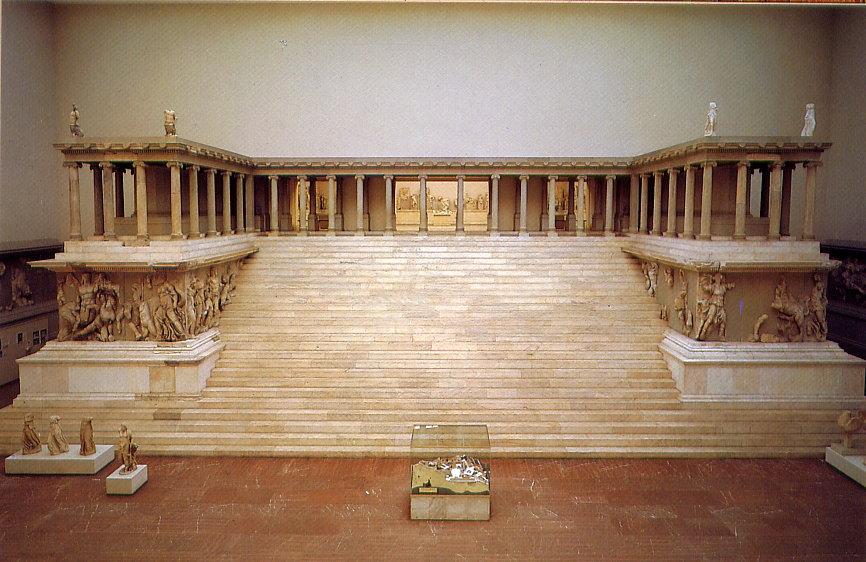Personal Detail Adds a Sense of Knowledge
Architecture has evolved and changed drastically since man first started building. The Great Pyramids of Giza feature a basic style of architecture, the Altar of Zeus, which was built thousands of years later, features intense detail and design. Man has learned to take basic structures and apply great detail to their work by using tools they have developed.
The Great Pyramids of Giza are an enormous tribute to the pharaoh’s they were built for. It took laborers many years to build these pyramids, which are made of giant stone blocks. These pyramids were built between 2600-2500 BCE (Fiero 50). These pyramids are very basic in their architecture and design; there isn’t any personal detail added to them.
The Altar of Zeus was built in 180 BCE, and is made of marble, is considered the “largest sculptural complex in the ancient world” (Fiero 132). There is a lot of hand-carved, personal detail depicted. There are borders around the front of the Altar, as well as columns and statues. The Altar of Zeus was built after a victory over Pergamon (Fiero 132). On the front of the Altar, is a depiction of what looks to be a battle. Fiero reference’s this depiction as a battle between the Olympic Gods and the Titans (50).
The basic principle of the great Pyramids of Giza was to develop an eternal resting place for pharaohs and a way to pay tribute to them. Over time, man has learned to add detail and depictions to their places of worship. The use of detail in the Altar of Zeus allows one experience the event without actually being there.
Works Cited
Fiero, Gloria. The Humanistic Tradition, Book 1: The First Civilizations and the Classical Legacy. 6th ed. New York: McGraw-Hill, 2011. Print.


